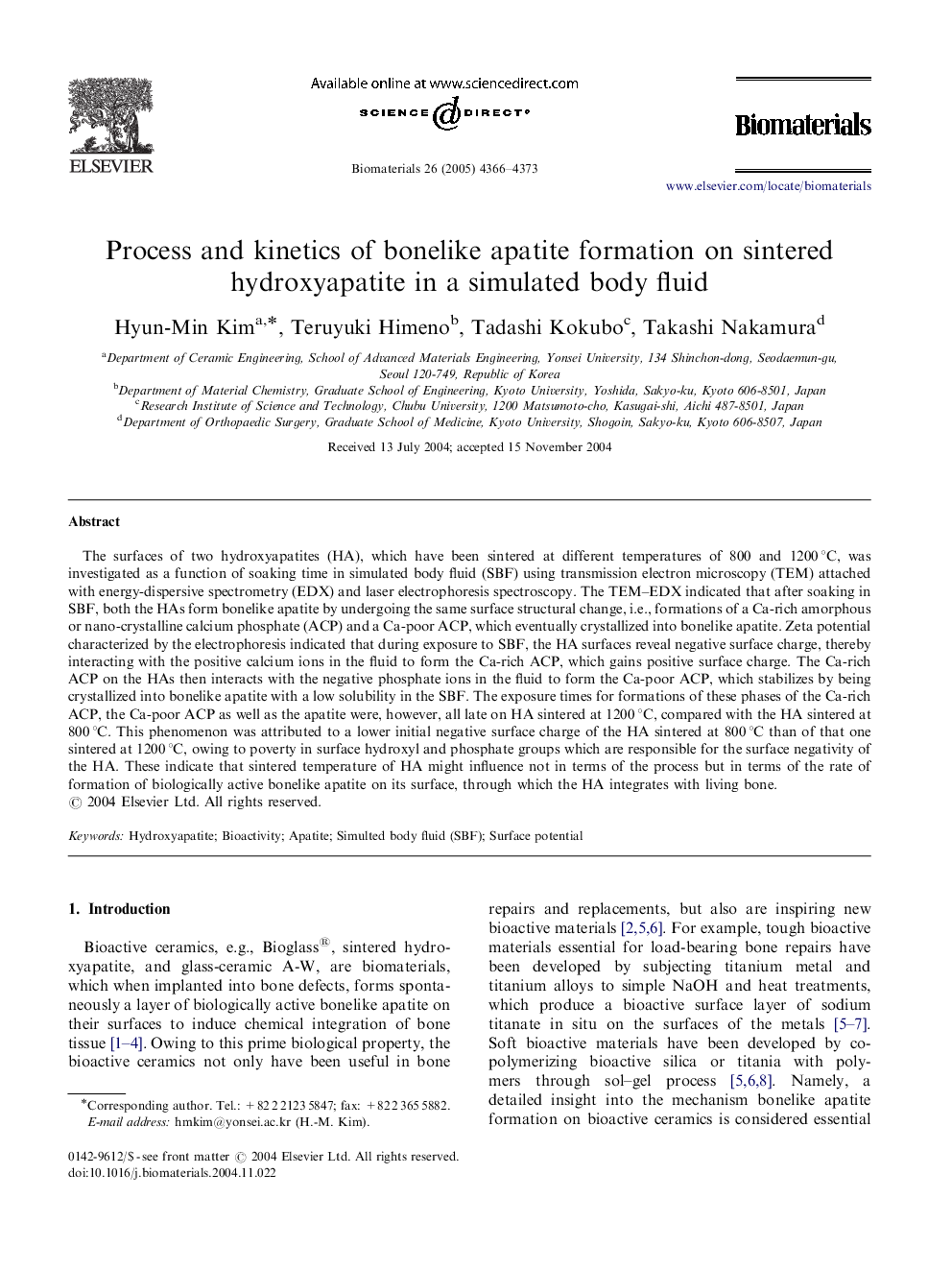| Article ID | Journal | Published Year | Pages | File Type |
|---|---|---|---|---|
| 12615 | Biomaterials | 2005 | 8 Pages |
The surfaces of two hydroxyapatites (HA), which have been sintered at different temperatures of 800 and 1200 °C, was investigated as a function of soaking time in simulated body fluid (SBF) using transmission electron microscopy (TEM) attached with energy-dispersive spectrometry (EDX) and laser electrophoresis spectroscopy. The TEM–EDX indicated that after soaking in SBF, both the HAs form bonelike apatite by undergoing the same surface structural change, i.e., formations of a Ca-rich amorphous or nano-crystalline calcium phosphate (ACP) and a Ca-poor ACP, which eventually crystallized into bonelike apatite. Zeta potential characterized by the electrophoresis indicated that during exposure to SBF, the HA surfaces reveal negative surface charge, thereby interacting with the positive calcium ions in the fluid to form the Ca-rich ACP, which gains positive surface charge. The Ca-rich ACP on the HAs then interacts with the negative phosphate ions in the fluid to form the Ca-poor ACP, which stabilizes by being crystallized into bonelike apatite with a low solubility in the SBF. The exposure times for formations of these phases of the Ca-rich ACP, the Ca-poor ACP as well as the apatite were, however, all late on HA sintered at 1200 °C, compared with the HA sintered at 800 °C. This phenomenon was attributed to a lower initial negative surface charge of the HA sintered at 800 °C than of that one sintered at 1200 °C, owing to poverty in surface hydroxyl and phosphate groups which are responsible for the surface negativity of the HA. These indicate that sintered temperature of HA might influence not in terms of the process but in terms of the rate of formation of biologically active bonelike apatite on its surface, through which the HA integrates with living bone.
